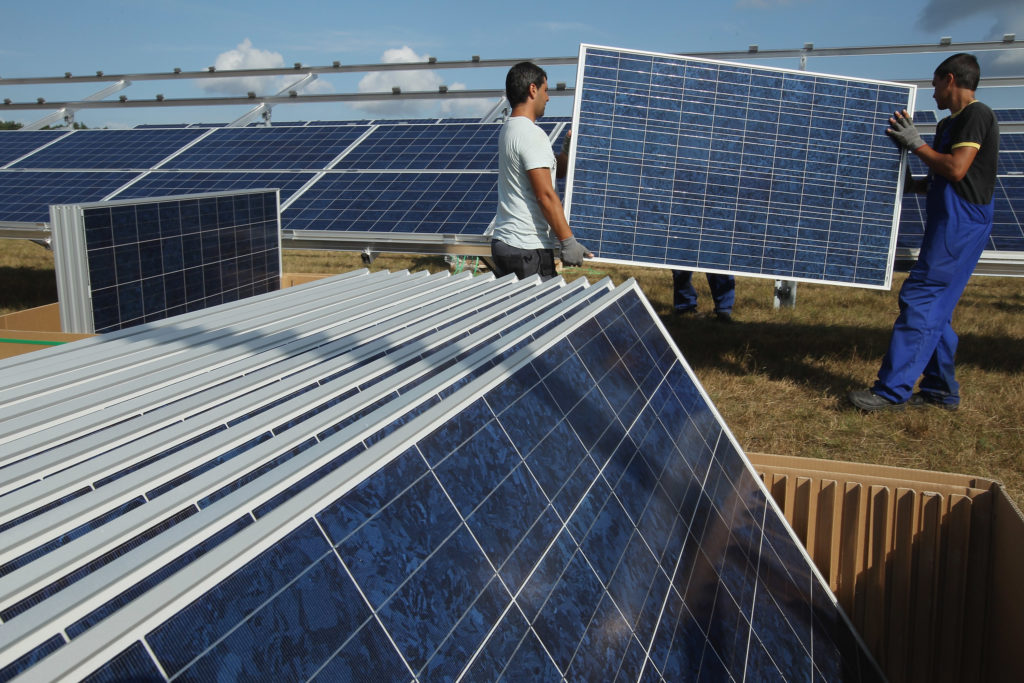Industrial Use of Renewable Energy in Europe

Is it feasible to power European industry fully with renewable energy? From the perspective of the copper industry, we present some of the challenges to be faced, and opportunities to be seized, for this scenario to come to fruition.
Industrial energy use and decarbonisation
For the copper industry, energy and climate costs are a very important part of the cost of doing business, making up between 25% and 35% of production costs. As a result, energy efficiency is extremely important, and has been the main driving force enabling the copper industry to reduce its unit energy consumption by 60% since 1990.
Looking at EU industry as a whole, its final energy use is 280 Million tonnes of oil-equivalent (Mtoe), of which 80 Mtoe is provided by electricity, and 200 Mtoe by heat. Of this heat energy component, 50 Mtoe are from bio/renewable sources, and 150 Mtoe from fossil fuels. An approach needs to be developed and agreed upon for how to decarbonise this 150 Mtoe of fossil heat. This could be achieved through a combustion route (mainly bioenergy with some hydrogen and solar), or through an electrification route, which means technologies such as electromagnetic induction, infrared heating and resistance heating, or with heat pumps.
The electrification route can reduce the final energy demand for thermal energy by a factor of between 1.5 and 8 (typically 2 to 3), which clearly shows this route has the potential to improve energy efficiency in addition to facilitating the integration of renewables. Naturally, electrifying a significant portion of this 150 Mtoe of fossil heat will significantly increase electricity demand by approximately 60 Mtoe, or 720 terawatt-hour per year.
As an aside, there is already a small overlap between electricity and heat: about 10 to 20 Mtoe of electricity use is currently applied for heat processes through thousands of induction, infrared, microwave and resistance furnaces.
It’s also interesting to note that long-term energy price projections used in 2050 scenarios anticipate a convergence of unit prices between gas and electricity, certainly within a factor 2 range, and this is before taking carbon pricing for fossil carriers into account.
Industrial Demand Side Management (DSM)
There is significant interest in flexibility on the demand-side in industry. For example, a Vito survey found strong interest in 21 out of 36 companies, representing 13% of load in the Belgian electricity system. However, demand flexibility can only work for non-bottleneck processes; the source of flexibility is the presence of buffers, or the possibility to modulate processes.
An H2020 project called IndustRE has been exploring how the flexibility potential of energy-intensive industries across Europe could help them save money, while supporting the efficient integration of more variable renewable energy into the European power system. IndustRE results indicate that the energy bill of industry could be reduced by 4% by making 15% of its demand flexible. Energy-intensive industries usually work with very narrow margins and such a cost-saving could be very relevant, but all depends on the investment required.
The need for investment
Industry could certainly increase its role in providing flexibility to the electricity system, but beyond the low-hanging fruit, industrial DSM requires investment—such as tools for better monitoring and electrification of processes—and hence needs a fair remuneration.
However, the time perspectives of energy trading (days, months, a year) do not correspond to the investment perspectives from industry (decades). The opportunity for electrification applies either to new investments, or targeted processes in existing lines. For such investments, the flexibility component could be integrated in the design phase, so as to limit extra investment costs and allow the accumulation of electrification’s many benefits, such as interaction with the electricity grid and lean manufacturing.
The new market design rules are very promising for changing the approach of industry towards DSM and realising the latent flexibility potential. What is vital is to better understand the long-term economics and risks for future investments.
Acknowledgement
This article was based on a contribution made at the 26th BBH Energy Conference on “Renewable Energies & Flexible Industrial Consumption” on 8 November 2017.


















